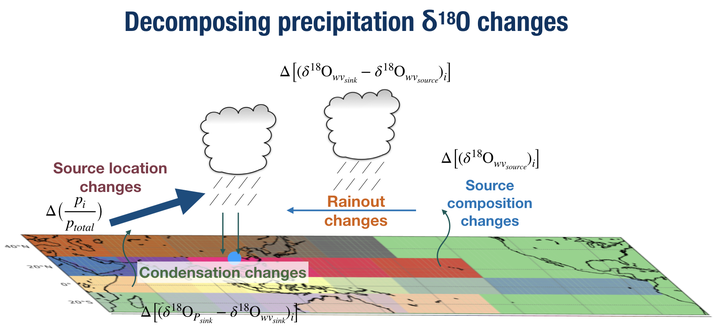Asian speleothem $\delta^{18}$O has been widely used to study paleo-hydroclimate variability due to its high dating precisions and fine temporal resolutions up to years. It was traditionally thought to represent the "monsoon intensity", however, recent studies have shown that it can be regulated by water vapor transport or the "upstream effect", with the related large-scale circulation variability. To understand the contribution of different processes controlling Asian speleothem $\delta^{18}$O, we employ an isotope-enabled model iCESM and track life cycles of water vapor originating from different regions. We found that at orbital scales, Asian speleothem $\delta^{18}$O mainly reflects the meridional migration of the monsoon circulation, rather than regional precipitation amount. At interannual scales, Asian speleothem $\delta^{18}$O is mainly tied to a change in moisture source locations.
Related Publication:
Hu, J., J. Emile-Geay, C. Tabor, J. Nusbaumer, and J. Partin, 2019: Deciphering Chinese speleothems with an isotope-enabled climate model. Paleoceanography and Paleoclimatology, 34, 2098-2112, doi:https://doi.org/10.1029/2019PA003741 (AGU Research Spotlight)
